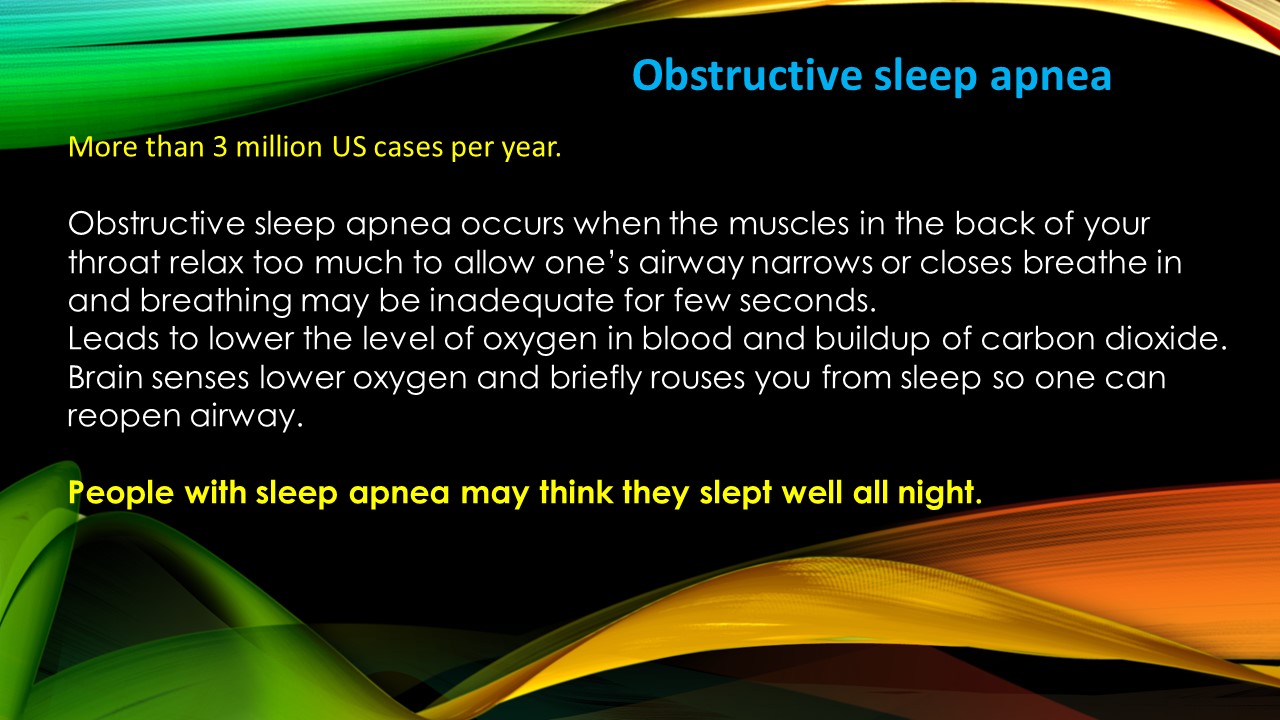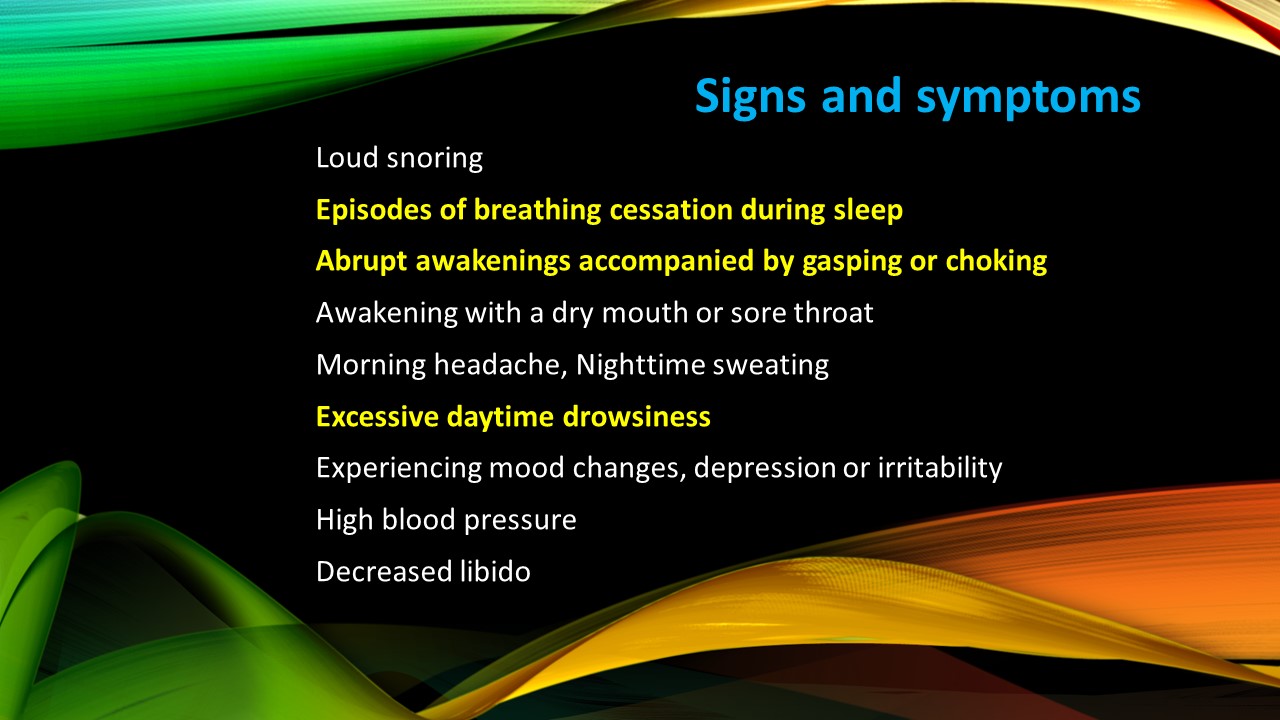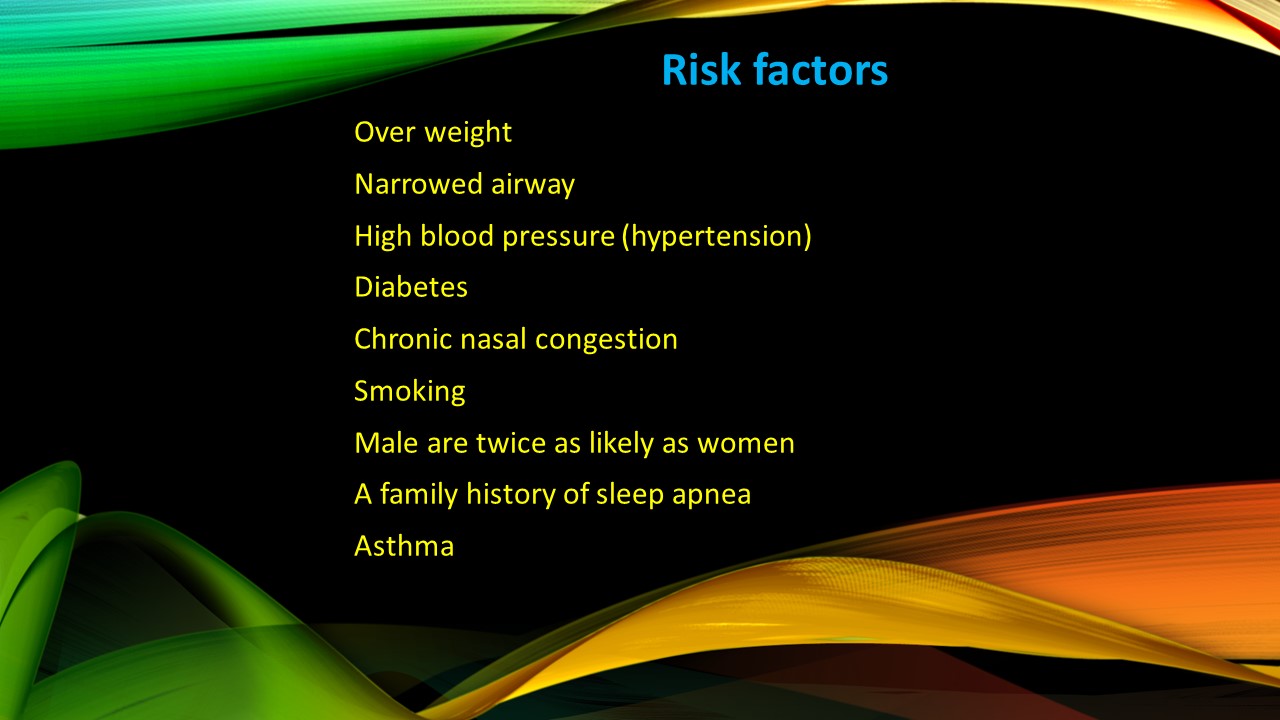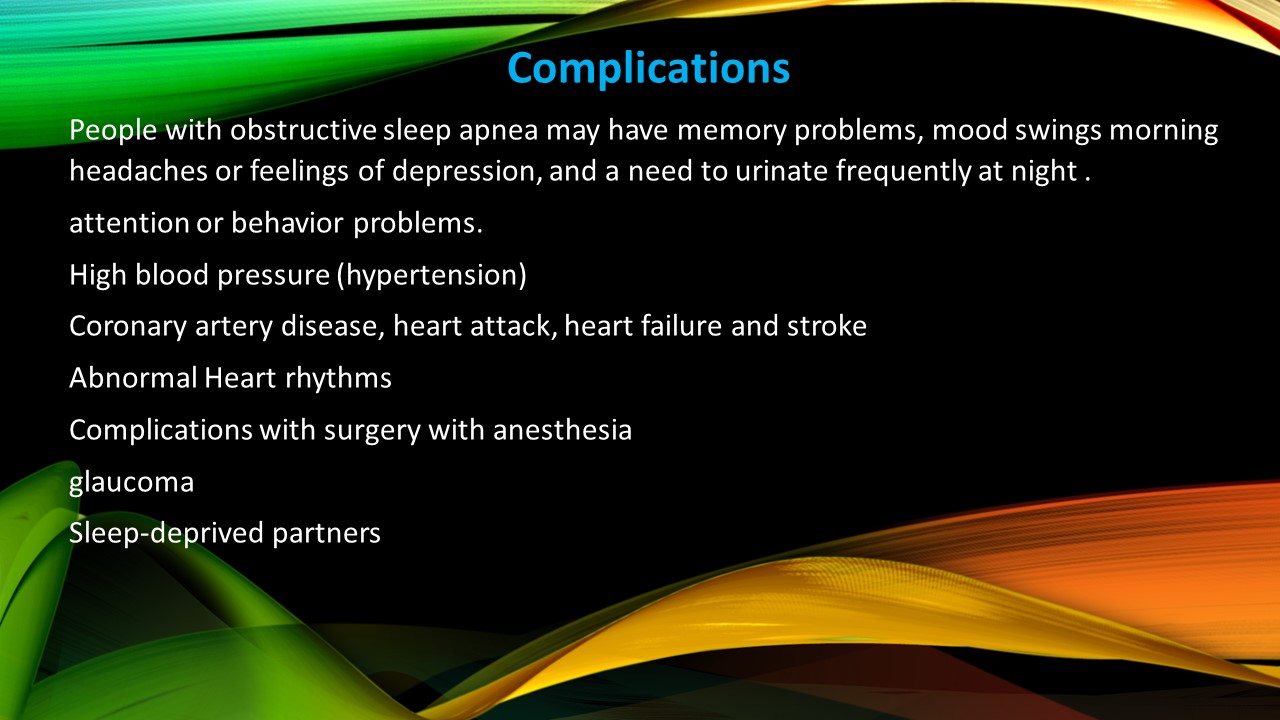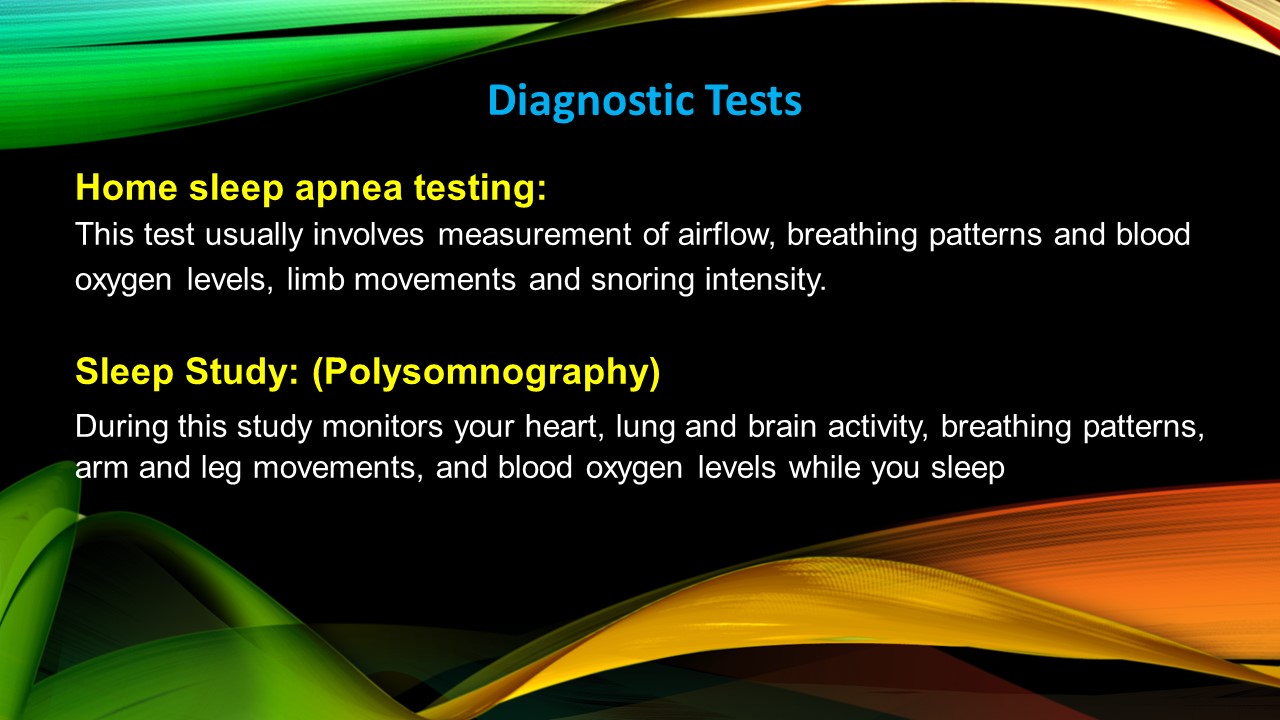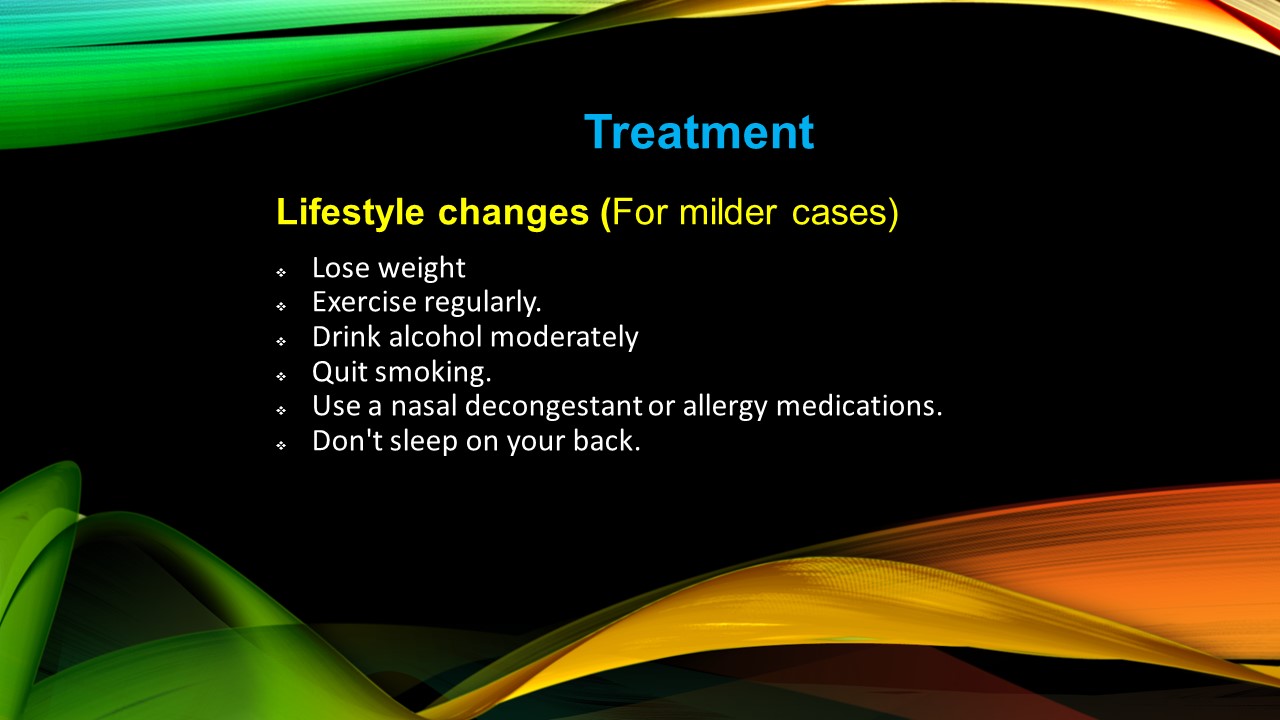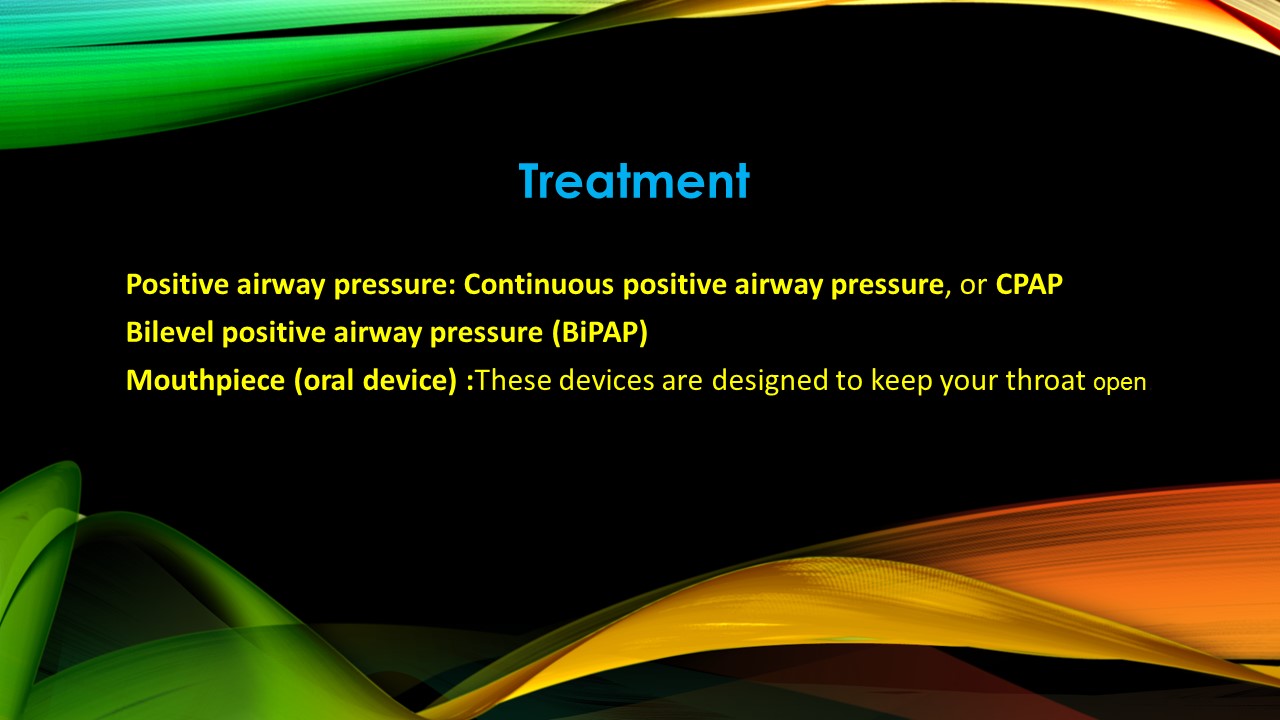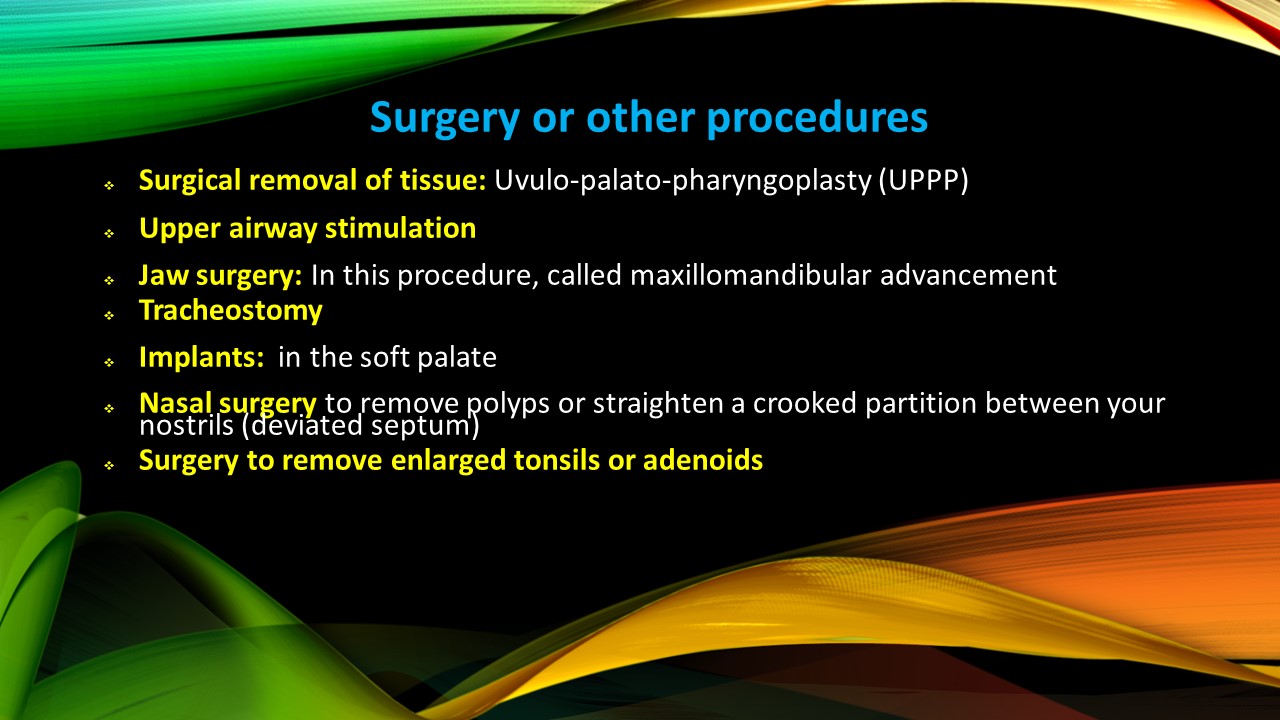Obstructive sleep apnea
More than 3 million US cases per year.
This type of apnea occurs when your throat muscles intermittently block airway during sleep.
Signs and symptoms of obstructive sleep apnea include:
Excessive daytime sleepiness
Loud snoring
Observed episodes of breathing cessation during sleep
Abrupt awakenings accompanied by gasping or choking
Awakening with a dry mouth or sore throat
Morning headache
Excessive daytime drowsiness, which may cause you to fall asleep while you’re working, watching television, or even driving a vehicle
Experiencing mood changes, such as depression or irritability
High blood pressure
Nighttime sweating
Decreased libido
Causes
Obstructive sleep apnea
Obstructive sleep apnea occurs when the muscles in the back of your throat relax too much to allow
your airway narrows or closes as you breathe in and breathing may be inadequate for few seconds.
Leads to lower the level of oxygen in your blood and buildup of carbon dioxide.
Brain senses lower oxygen and briefly rouses you from sleep so one can reopen airway.
People with this type of sleep apnea think they slept well all night.
Risk factors:
Over weight
Narrowed airway
High blood pressure (hypertension)
Diabetes
Chronic nasal congestion
Smoking
Male are twice as likely as women
A family history of sleep apnea
Asthma
Complications:
People with obstructive sleep apnea may have memory problems, morning headaches, mood swings or feelings of depression, and a need to urinate frequently at night (nocturia).
attention or behavior problems.
High blood pressure (hypertension)
Coronary artery disease, heart attack, heart failure and stroke
Abnormal Heart rhythms
Complications with medications and surgery with anesthesia
glaucoma
Sleep-deprived partners
Diagnosis and Tests:
Home sleep apnea testing. This test usually involves measurement of airflow, breathing patterns and blood oxygen levels, and possibly limb movements and snoring intensity.
Sleep Study: (Polysomnography) During this study monitors your heart, lung and brain activity, breathing patterns, arm and leg movements, and blood oxygen levels while you sleep
Treatment
Lifestyle changes (For milder cases)
- Lose weight
- Exercise regularly.
- Drink alcohol moderately
- Quit smoking.
- Use a nasal decongestant or allergy medications.
- Don’t sleep on your back.
Continuous positive airway pressure (CPAP)
Oral device
- Positive airway pressure: Continuous positive airway pressure, or CPAP
Bilevel positive airway pressure (BiPAP)
- Mouthpiece (oral device)
These devices are designed to keep your throat open.
Surgery or other procedures
- Surgical removal of tissue.Uvulo-palato-pharyngoplasty (UPPP)
- Upper airway stimulation
- Jaw surgery.In this procedure, called maxillomandibular advancement
- Tracheostomy
- in the soft palate
- Nasal surgery to remove polyps or straighten a crooked partition between your nostrils (deviated septum)
- Surgery to remove enlarged tonsils or adenoids.
